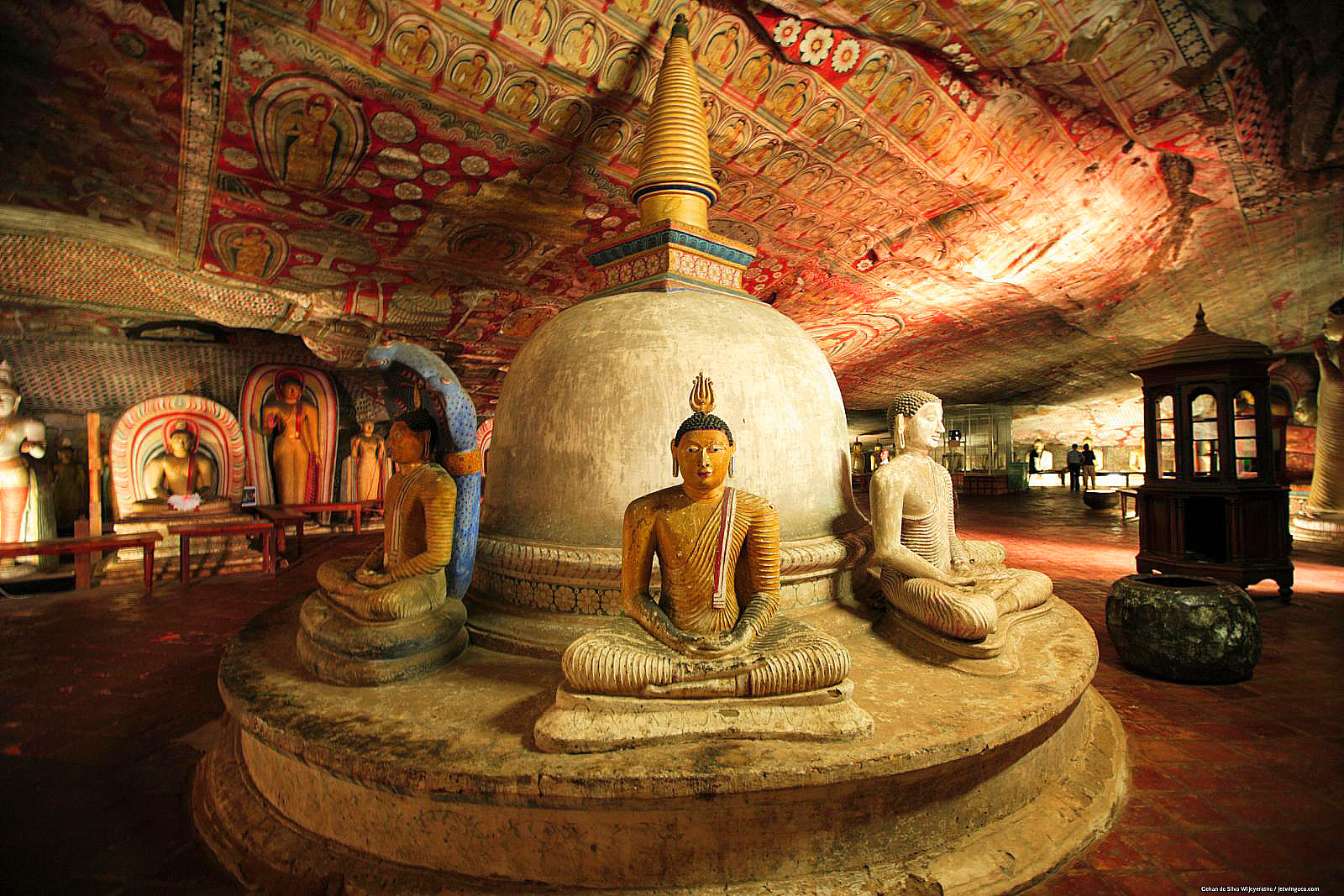Declared a UNESCO World Heritage Site in 1991, the Golden Temple of Dambulla, also known as the Dambulla Caves Temple, is a prestigious landmark of the ancient city. Any traveler along the Kandy-Jaffna highway will be able to see the scenic Dambulla rock and the neighboring cave temple. This beautiful Sri Lankan heritage has remained in Dambulla majestically for centuries, depicting the culture of Buddhism to its visitors.
- Area: From Dambulla, the complex stretches out 148 square kms towards east of Colombo and 72 square kms towards North of Kandy.
- Dambulla Caves Temple is a massive and very well preserved cave temple in Sri Lanka.
- The Dambulla rock is 160m high and is surrounded by more than 80 documented caves.
- Five popular caves contain the major attractions, with several statues and paintings that are related to Buddha’s life. These caves vary in sizes and magnificence.
- What do you find in these caves?
- 153 Buddha Statues
- 3 statues of Sri Lankan Kings
- 4 statues of Gods and Goddesses, including one of Vishnu and Ganesha.
- The murals take up an area of 2100 square meters.
- The walls of the caves depict things such as Buddha’s first ever sermon and the temptation by demon Mara.
- Archaeologists have found burial sites of human skeletons about 2700 years old near the cave temple complex. Hence it can be assumed that pre-historic Sri Lankans lived in the cave complexes before Buddhism came into Sri Lanka.
- Upon standing on the slope of the Dambulla Rock, one has a clear, panoramic view of the surrounding lands, including the Lion’s Rock (Sigiriya).
- During sunset, thousands of swallows come swooping to the cave entrance; a rare sight indeed.
- The biggest cave is 52m from east to west, 23m from front to back and 7m in height.
- Along with Buddha’s most devoted followers such as Kings Ananda, Nissankamalla and Valagamba, Hindu deities are also represented in these caves.
- King Valagamba turned these caves into a temple during the first century BC. Other kings contributed to this temple and by the 11th century, the complex became a popular religious center, as it is today.
- In the 18th century, the Kingdom of Kandy restored and painted the caves.
As we have read above, ancient Sinhalese Kings have worked hard to preserve the pride and beauty of the cultural heritage in Sri Lanka. The cave temple in Dambulla exhibits the beauty of Buddhism, its teachings and how the religion has compassion towards all living beings. Hence this is a popular tourist attraction in Sri Lanka and Blue Lanka Tours makes sure this site is included in all our Sri Lanka holiday itineraries that cover the Sigiriya/Dambulla area.

